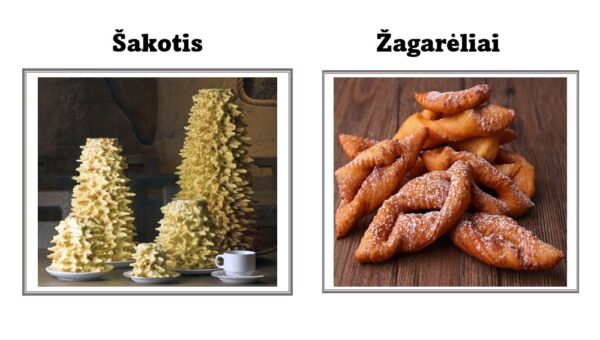
SPOTLIGHT ON LITHUANIAN CULTURE! CHAPTER 5: Lithuanian desserts

ŠAKOTIS
The origins of šakotis (branch cake) can be traced back to 15th century Europe when it was made by monks according to carefully guarded recipes. Šakotis arrived in Lithuania at the beginning of the 20th century, when it began to be baked in monasteries. In German, šakotis is known as baumkuchen (tree cake). The shape of the dessert resembles a Christmas tree, with its “spikes” representing branches. By cutting the dessert in cross section, it is possible to count the number of times the dough has been poured. Šakotis is baked in different sizes, and has a mild taste and pleasant aroma. Today, there are about 60 known recipes for this dessert. Did you know that delicious Šakotis cakes are baked on a spit right here at the Lithuanian World Center? Follow us on Facebook where you’ll soon see the bakers in action!
ŽAGARĖLIAI
Although Žagarėliai can be prepared in different ways, their dough is usually made of flour, eggs, butter, and sour cream. The stiff dough is kneaded, rolled out, and cut into strips, which are slit down the middle, twisted, and fried in hot fat (lard or oil). The crispy pastries are then dusted with confectioner’s sugar before being served. The type of dough used to make Žagarėliai is called “Jufka,” which is made by repeatedly rolling and folding the dough to create many, many layers, which puff up to form delightful “blisters” of pastry when cooked in oil.
Want to make your own Žagarėliai? Here’s the recipe: https://www.youtube.com/watch?v=Qx2O_QNTAeU
LIKE WHAT THE LITHUANIAN WORLD CENTER IS DOING? SUPPORT US AT https://www.lcenter.org/donate/